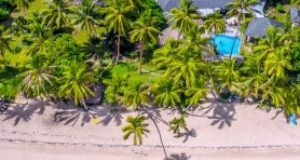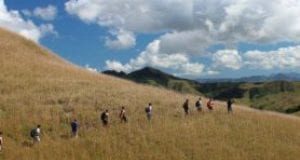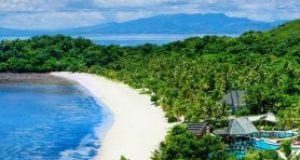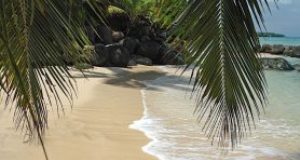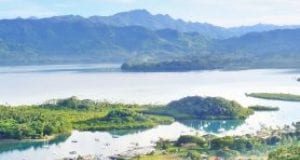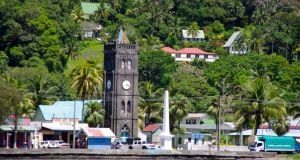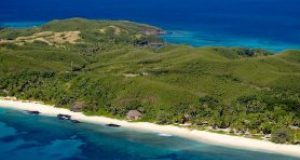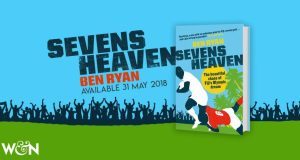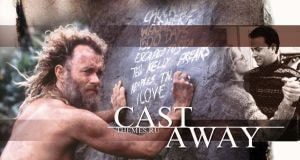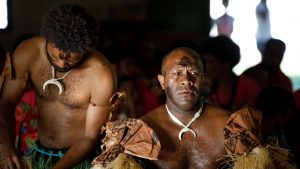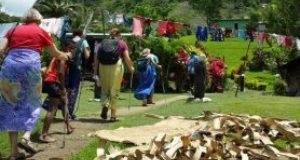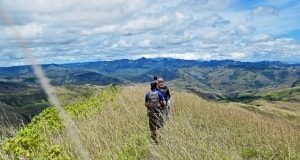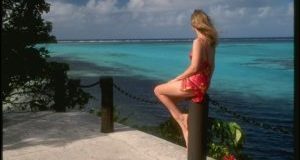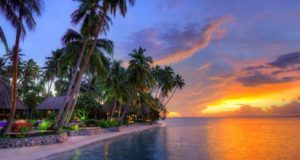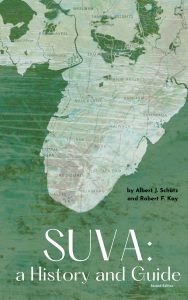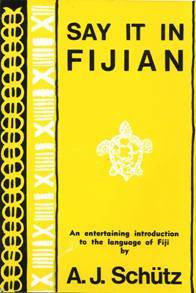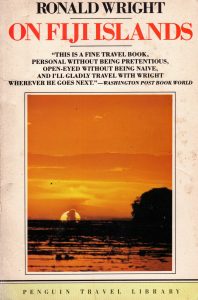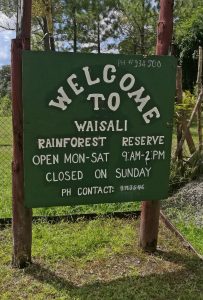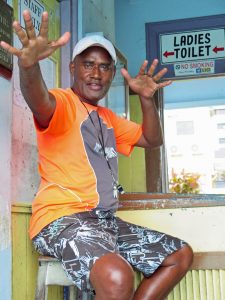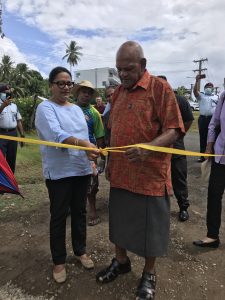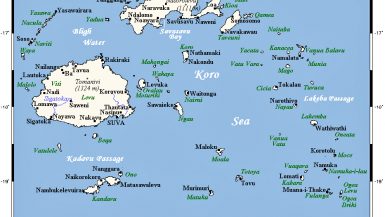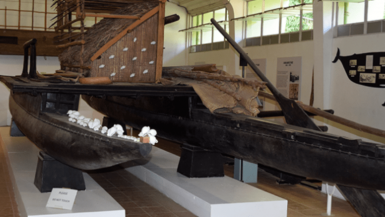Derek bought two bark cloth place mats from the bushy-haired Fijian saleswoman. We were then approached by her son, a boy of about fourteen:
“Good morning, sirs. If you like I can show you the village.”
“What do you charge?” Derek asked.
“Whatever you think is right.”
We followed him into a small Fijian community that occupied some flat land between the road and the Pacific. The houses were modern freshly painted, modestly prosperous. Unlike the tourist stalls and hotel bars, they were built of cement blocks and clapboard, with metal roofing. Many were shaded by mango and breadfruit trees; hibiscus, bougainvillea, and frangipani bushes grew around them.
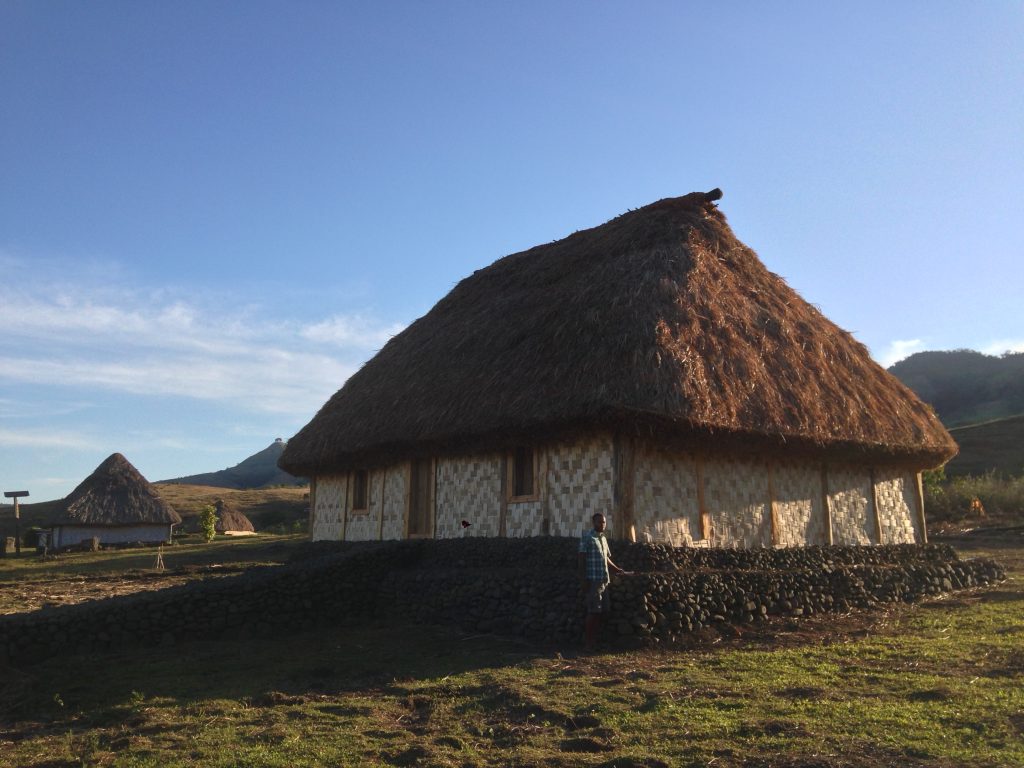
As a child reading sea stories I had imagined the breadfruit as an apple tree hung with loaves. I saw now that it has large leaves the shape of swans’ feet, and its fruit resemble giant avocados with reticulated skin. There were no fences or formal streets, the village houses were arranged in a roughly circular pattern around a central green, called a rara, and separated from each other by stretches of well-trimmed grass.
The inhabitants appeared to be out for the day or resting indoors. It was quiet; I could hear waves on the beach, wind in the trees, a distant radio, and an occasional passing car. There was no clutter or untidiness. The only things that seemed out of place were the carcass of an old Bedford lorry and beside it an elliptical stone, about three feet long, with a cup hollowed in the top.
“In the old days,” the boy said, “we used those for pounding roots.” He walked on ahead. Derek said: “It was probably a sacrificial stone where they killed their prisoners-and I think he knows it.”

Around the rara, an expanse of lawn about a hundred yards across, stood the most important buildings: the Methodist church, the chief’s bure, and the houses of clan heads. The church could have passed without comment in rural Canada-white clapboard walls, a steep metal roof, and Gothic windows with panes of coloured glass. More interesting was the bure, or ceremonial meeting house, which rested on a low earth platform and was being re-thatched; its wall posts and woven bamboo framework were temporarily exposed. When finished, Derek remarked, the bure would look like an elegant haystack with doors. This building, a focus of the community, was clearly authentic-built in the traditional Fijian style for Fijians, not tourists. In front of it stood a flagpole and a small thatched shelter, open to one side.
“That we built for Queen Elizabeth when she came here,” the boy said proudly. “You know Queen Elizabeth?” “Not personally.” \
“She visited here because our village, Viseisei, is the oldest in Fiji. Viseisei means”-he searched for the right word-“to scatter, to spread out. Our ancestors scattered from here after they reached Fiji in the great canoe, Kaunitoni. This whole district is called Vuda, which in Fijian language means ‘original.’ “
“Ah, yes,” Derek said when we got back to the taxi, “the Kaunitoni migration myth. It’s a modern fabrication. Don’t believe a word of it.”

Historian, novelist, and essayist Ronald Wright is the award-winning author of nine books of nonfiction and fiction published in 16 languages and more than 50 countries. Much of his work explores the relationships between past and present, peoples and power, other cultures and our own.
On Fiji Islands, was published in 1983 to critical acclaim. Ron has graciously allowed Fijiguide.com to serialize his work for your enjoyment. We welcome your comments.
©2018 Ronald Wright




